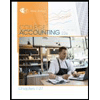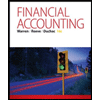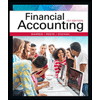
Income Statement:
It is a financial statement that shows the
It is a financial statement that shows the amount of profit retained by the company for future unforeseen events.
It shows the financial position of an enterprise. It consists of assets, liabilities, and
Closing Entries:
These entries are made for those items whose balance needs to be zero for the next accounting period otherwise data from two accounting periods will get mixed and we only want to see the data of one accounting period in it.
Accounting rules regarding journal entries:
- Balance increases when: Assets, losses, and expenses get debited and liabilities, gains, and revenue get credited.
- Balance decrease when: Assets, losses, and expenses get credited and liabilities, gains, and revenue get debited.
Return on Asset:
It tells about how much the company is earning from the total amount of assets it has. It is determined by dividing net income from total average assets into percentage terms.
Debt Ratio:
It shows how much of the company’s assets are bought using debt capital. The higher the debt ratio higher the financial risk, lower the debt ratio lower the financial risk. it comes after dividing debt capital by total assets.
Profit Margin Ratio:
It shows how much the company is earning for every dollar of its revenue. It comes after dividing net sales from revenue into percentage terms.
It shows whether the company will be able to pay its current liabilities out of its current asset or not. It comes after dividing current liabilities by current assets.
1.
To prepare: Income statement, statement of retained earnings, and classified balance sheet.
2.
To prepare: Closing entries
3.
a.
Return on assets ratio.
b.
Debt ratio.
c.
Profit margin ratio.
d.
Current ratio.
Want to see the full answer?
Check out a sample textbook solution
Chapter 3 Solutions
FINAN. AND MANAGERIAL ACCT LL W/ ACCESS
 College Accounting, Chapters 1-27 (New in Account...AccountingISBN:9781305666160Author:James A. Heintz, Robert W. ParryPublisher:Cengage Learning
College Accounting, Chapters 1-27 (New in Account...AccountingISBN:9781305666160Author:James A. Heintz, Robert W. ParryPublisher:Cengage Learning Cornerstones of Financial AccountingAccountingISBN:9781337690881Author:Jay Rich, Jeff JonesPublisher:Cengage Learning
Cornerstones of Financial AccountingAccountingISBN:9781337690881Author:Jay Rich, Jeff JonesPublisher:Cengage Learning Financial Accounting: The Impact on Decision Make...AccountingISBN:9781305654174Author:Gary A. Porter, Curtis L. NortonPublisher:Cengage Learning
Financial Accounting: The Impact on Decision Make...AccountingISBN:9781305654174Author:Gary A. Porter, Curtis L. NortonPublisher:Cengage Learning Financial AccountingAccountingISBN:9781305088436Author:Carl Warren, Jim Reeve, Jonathan DuchacPublisher:Cengage Learning
Financial AccountingAccountingISBN:9781305088436Author:Carl Warren, Jim Reeve, Jonathan DuchacPublisher:Cengage Learning Financial AccountingAccountingISBN:9781337272124Author:Carl Warren, James M. Reeve, Jonathan DuchacPublisher:Cengage Learning
Financial AccountingAccountingISBN:9781337272124Author:Carl Warren, James M. Reeve, Jonathan DuchacPublisher:Cengage Learning





